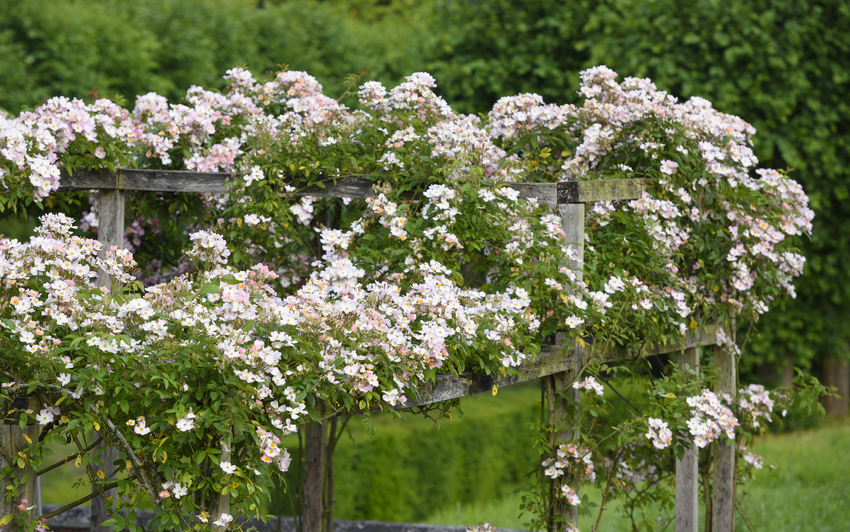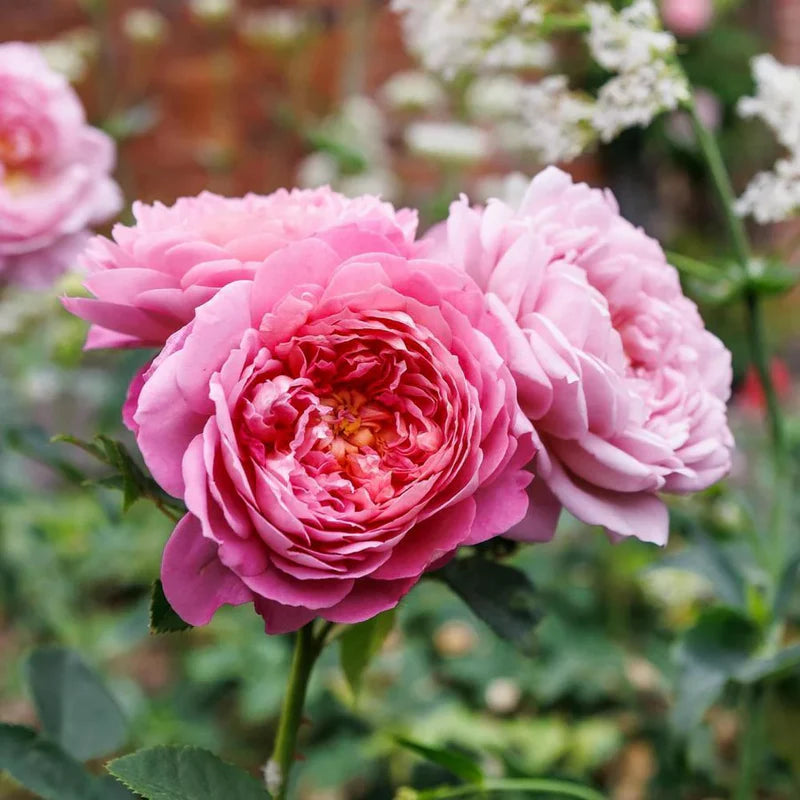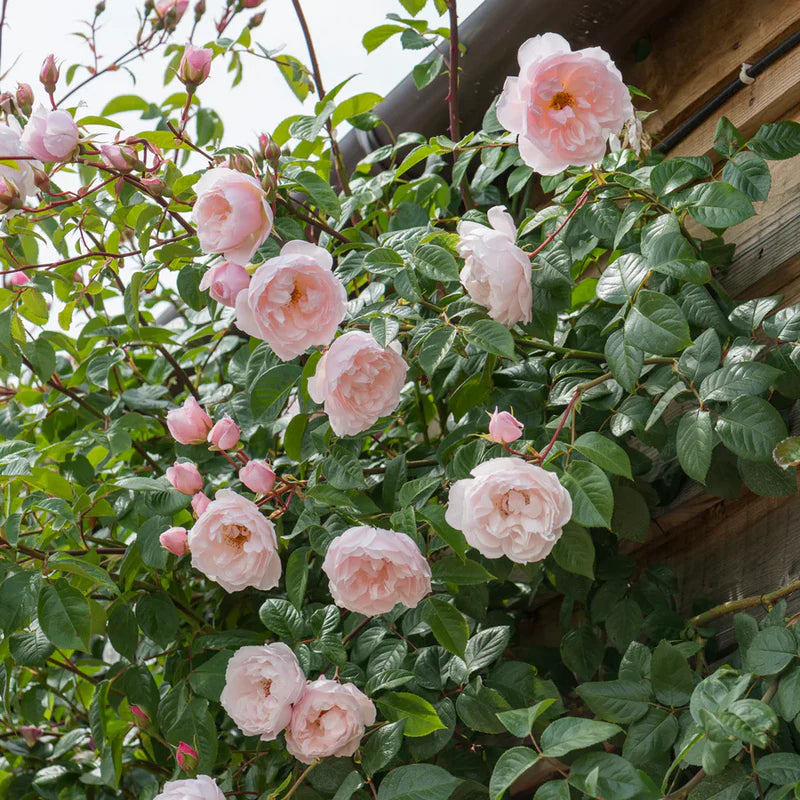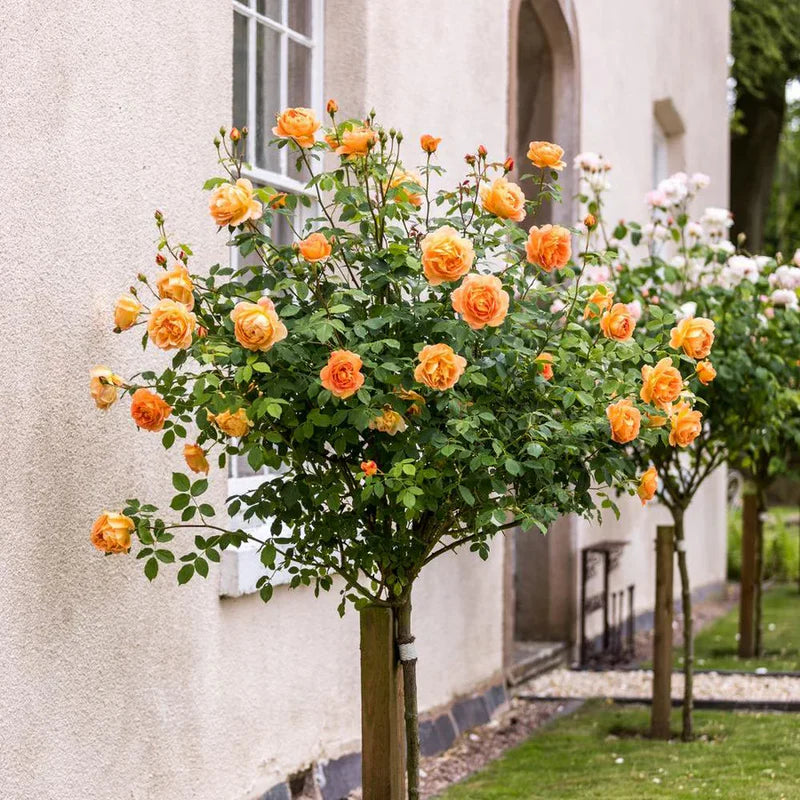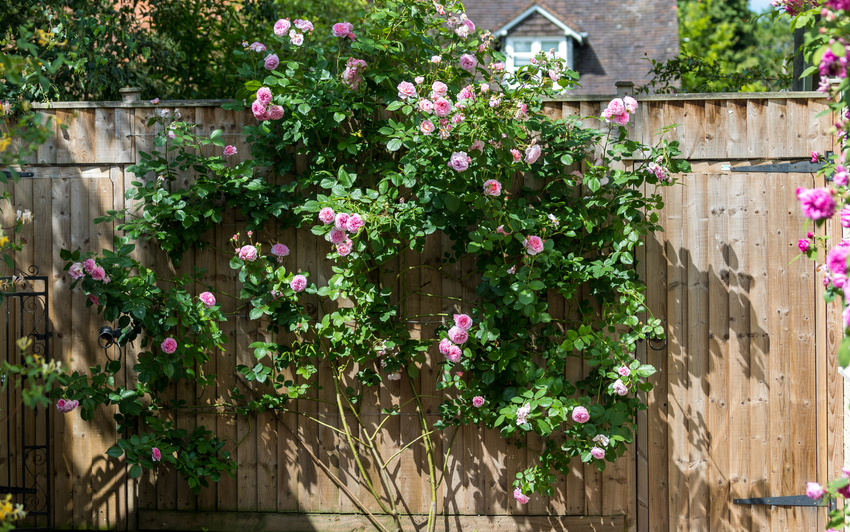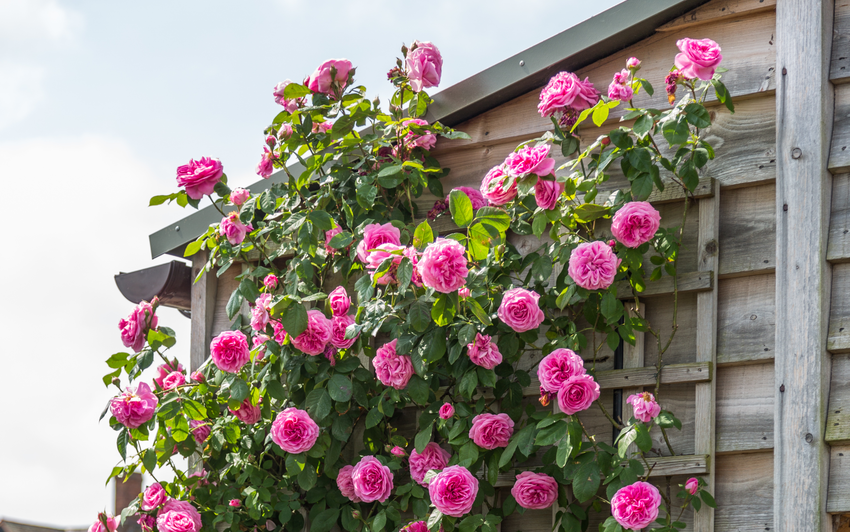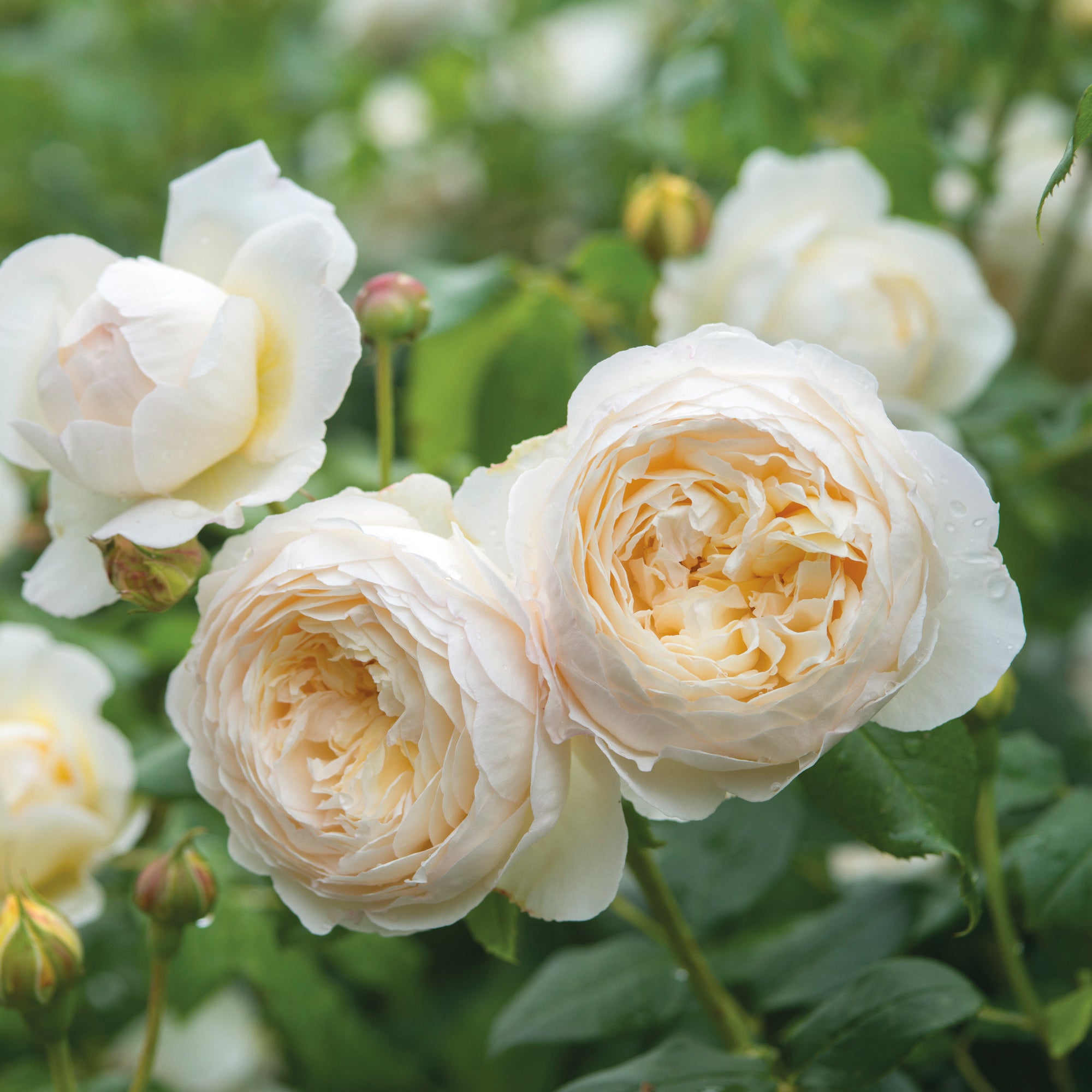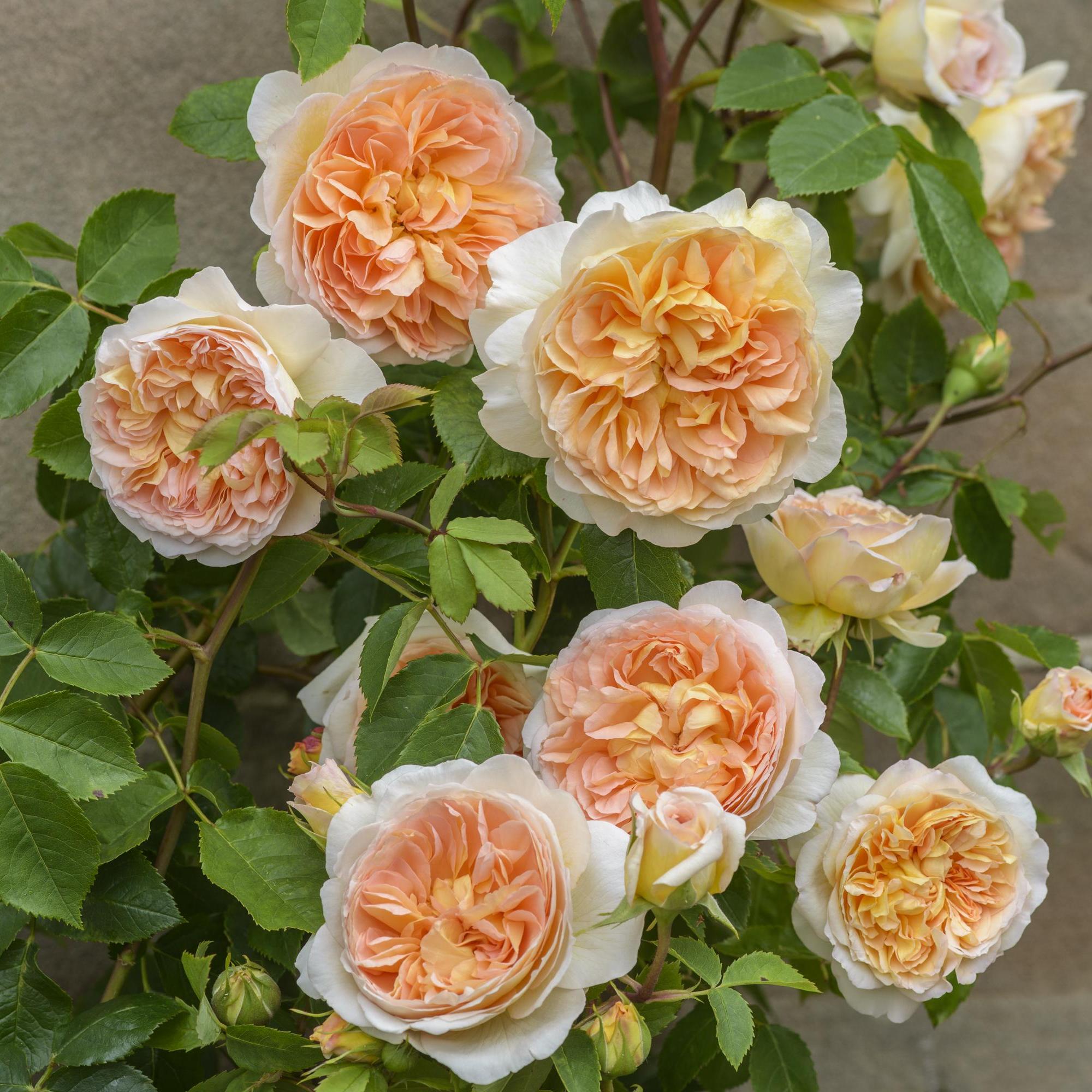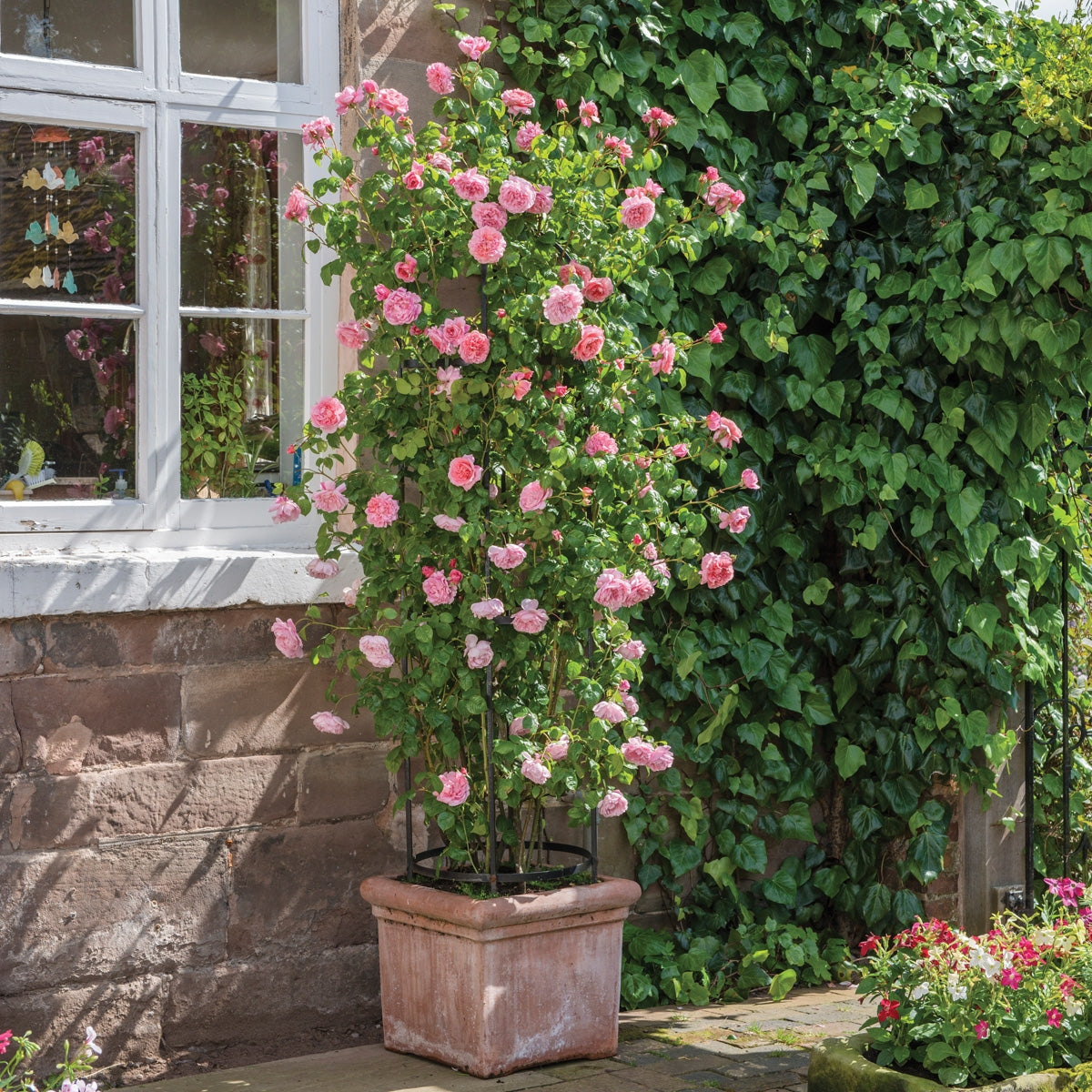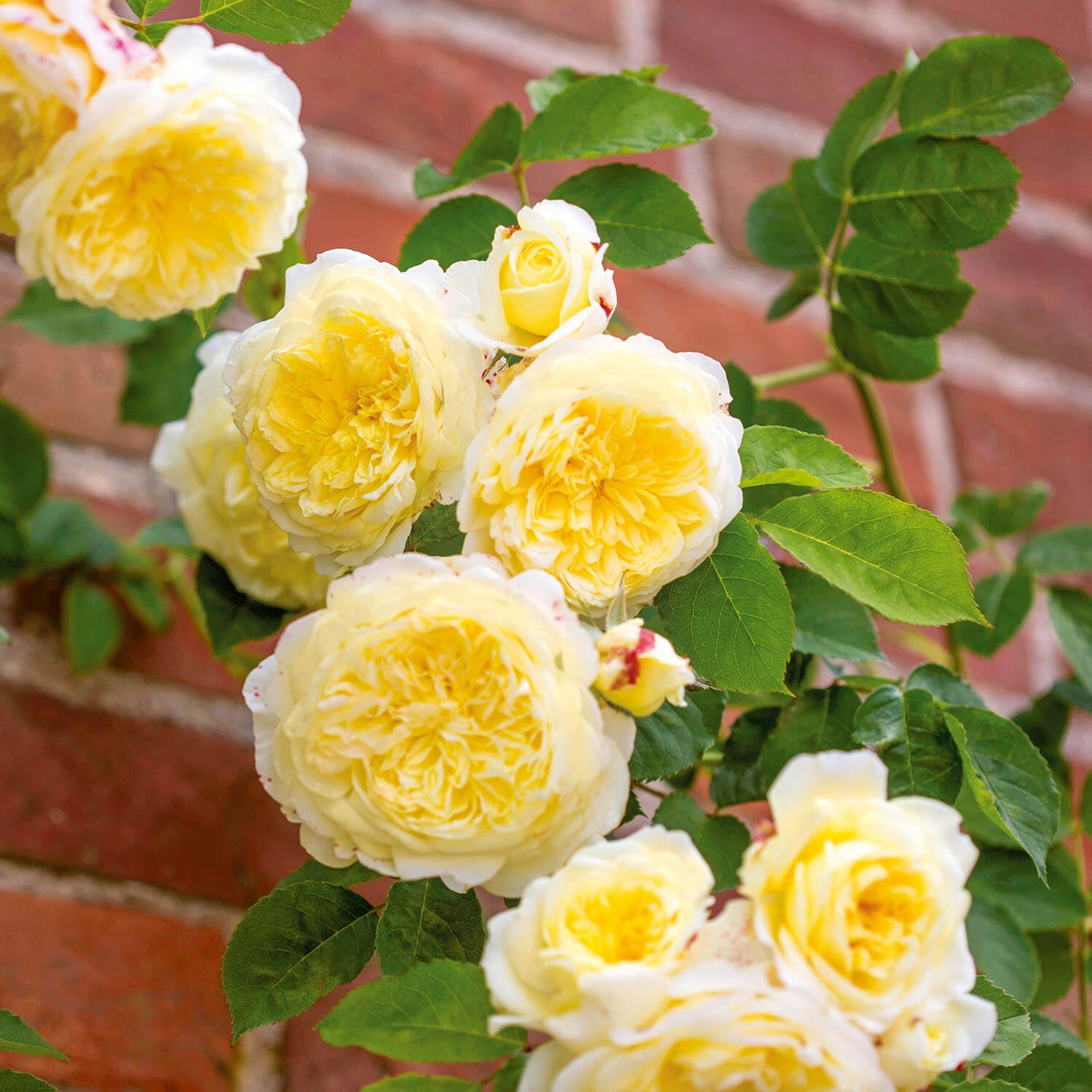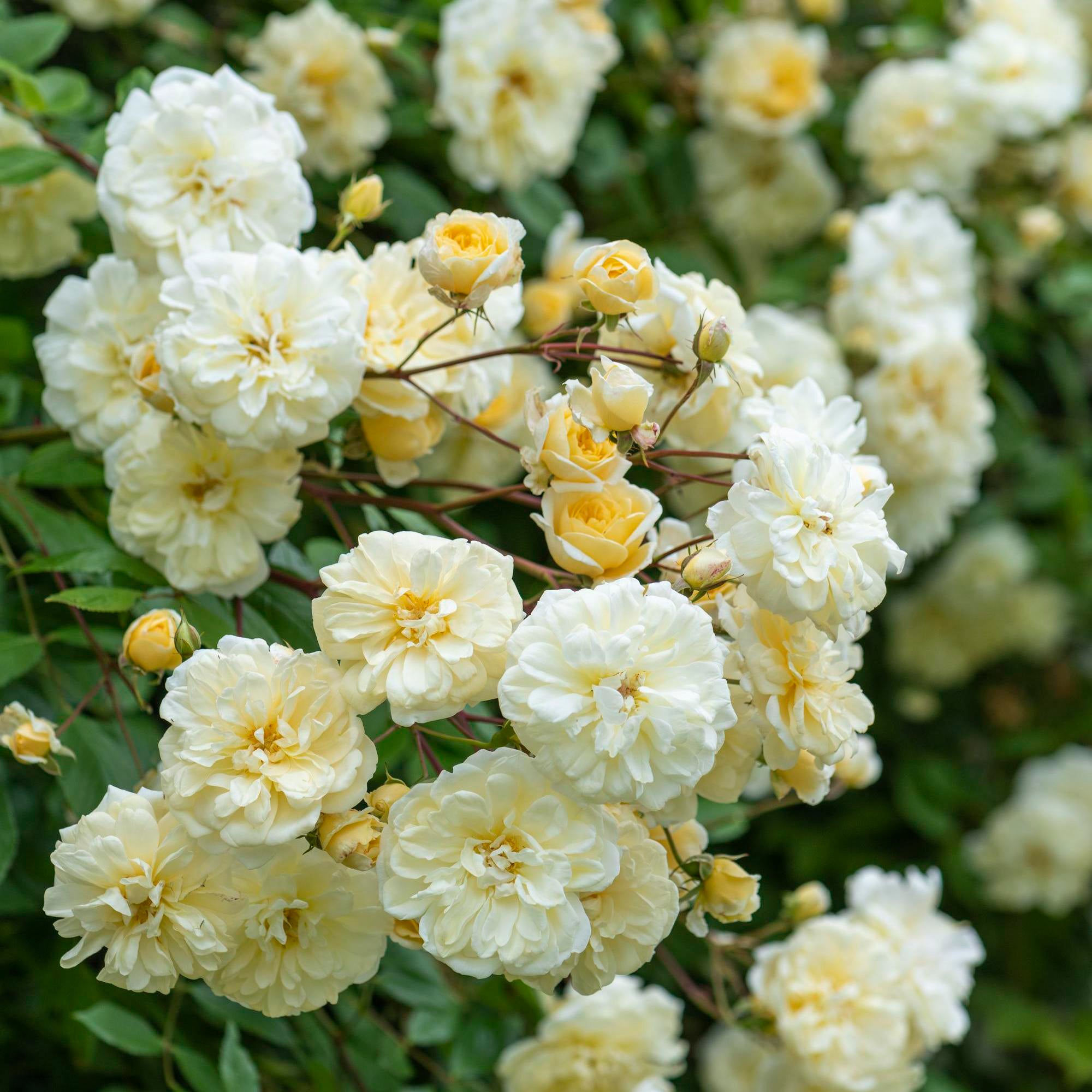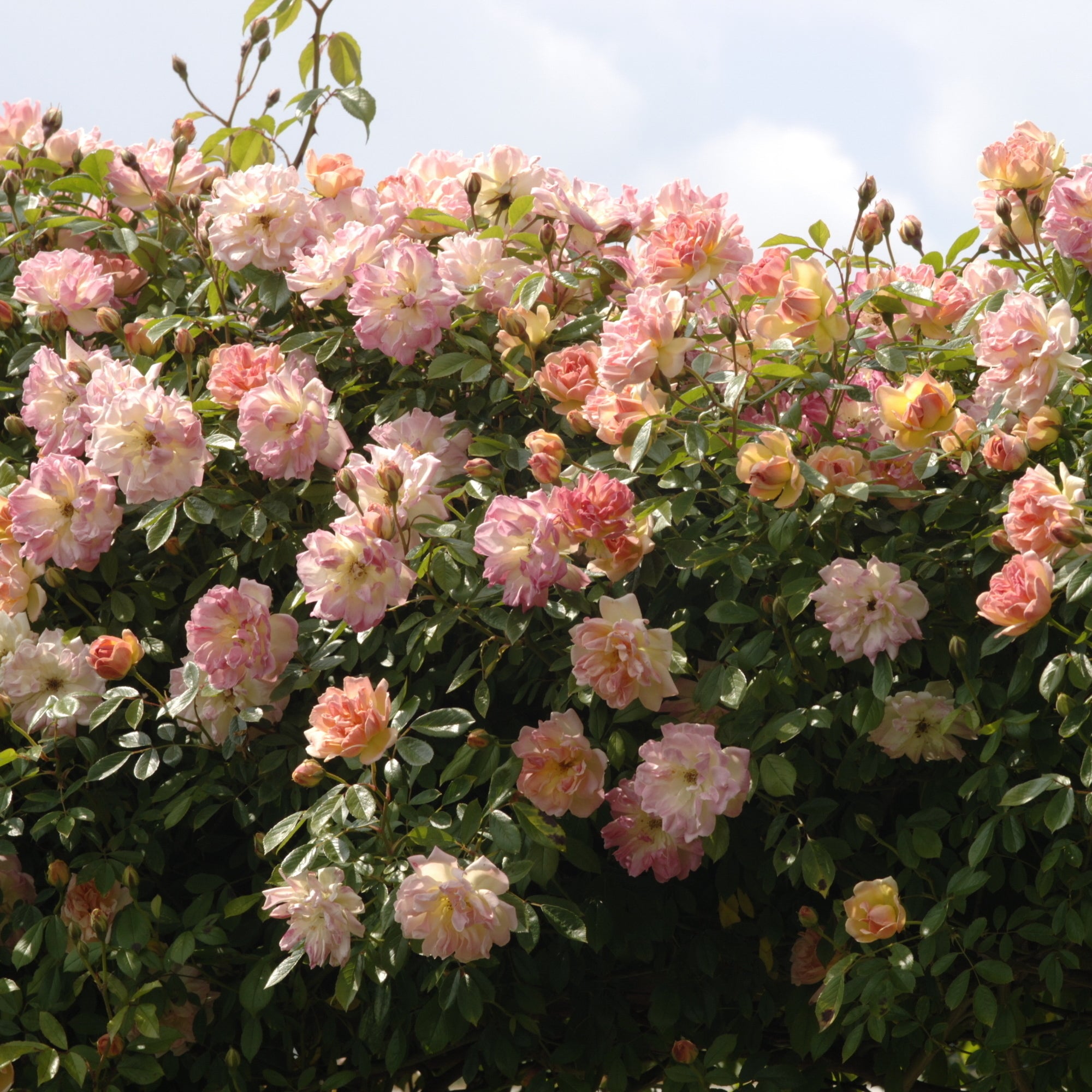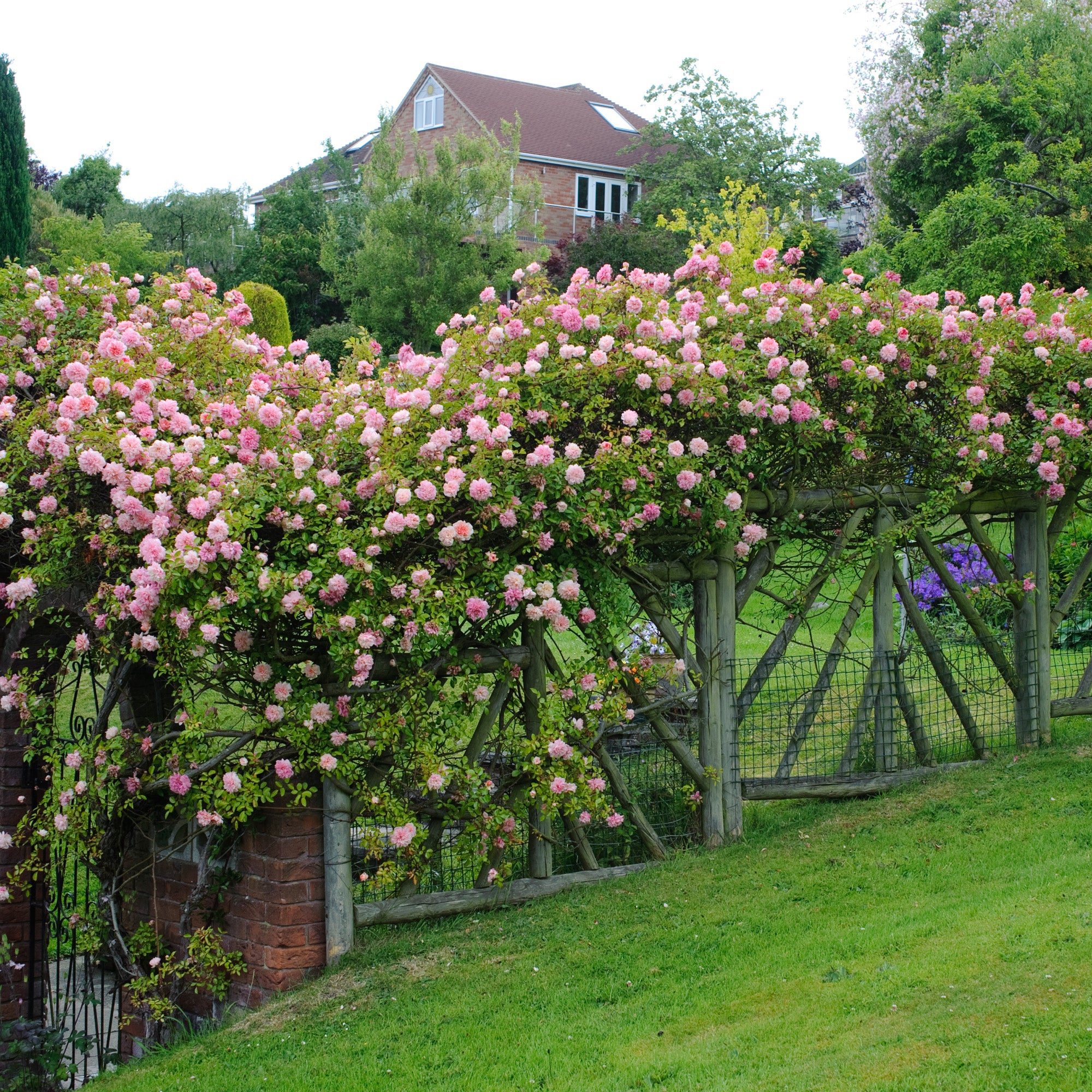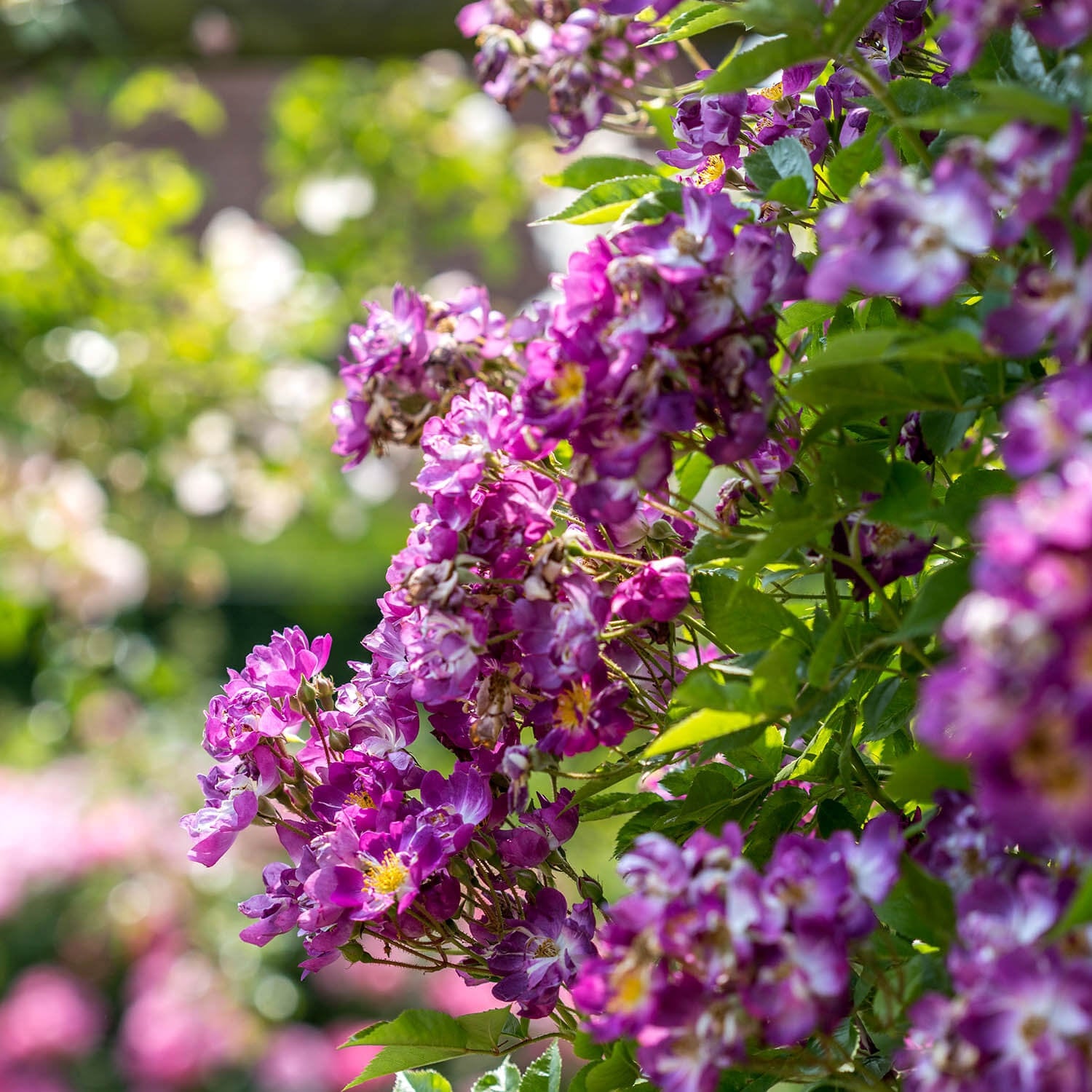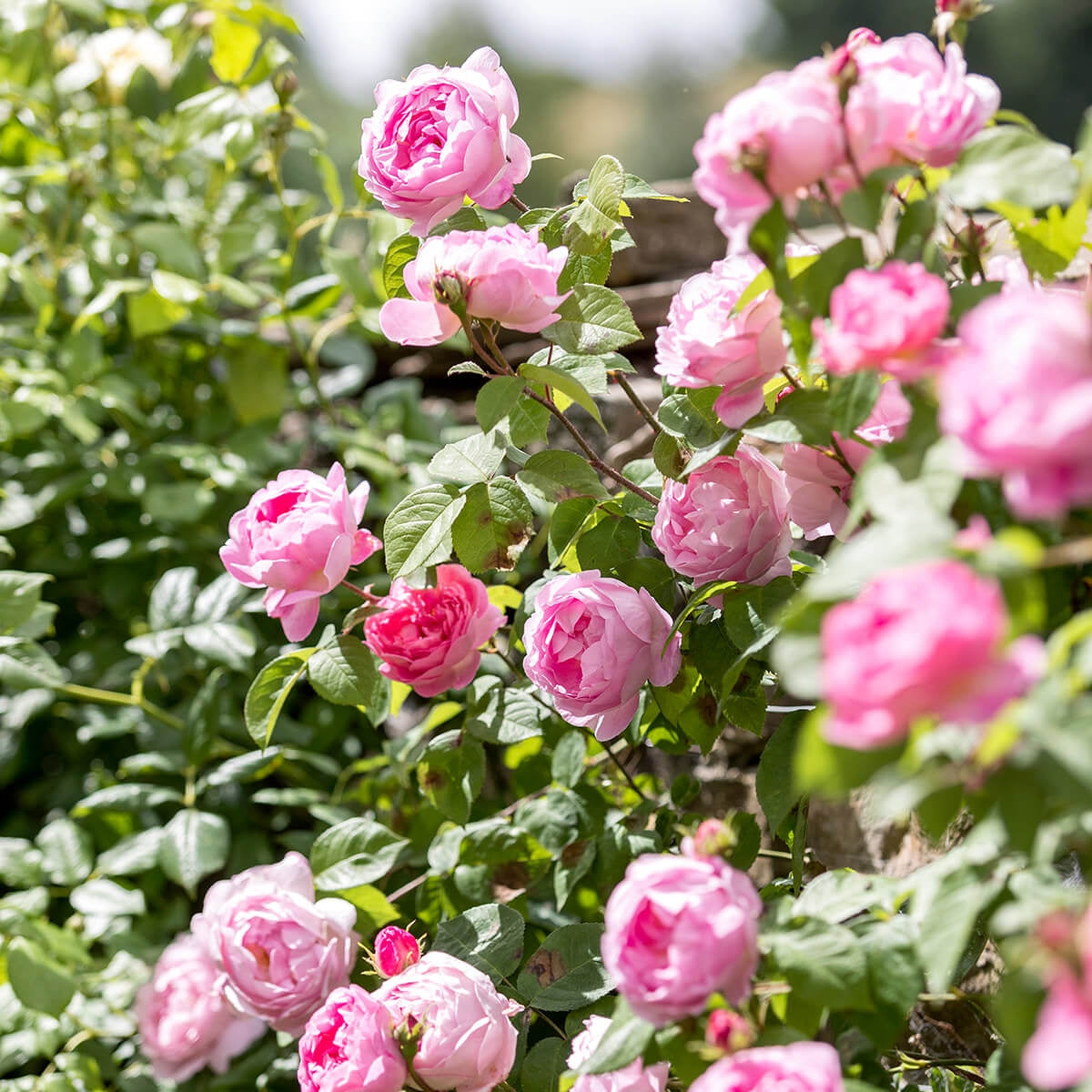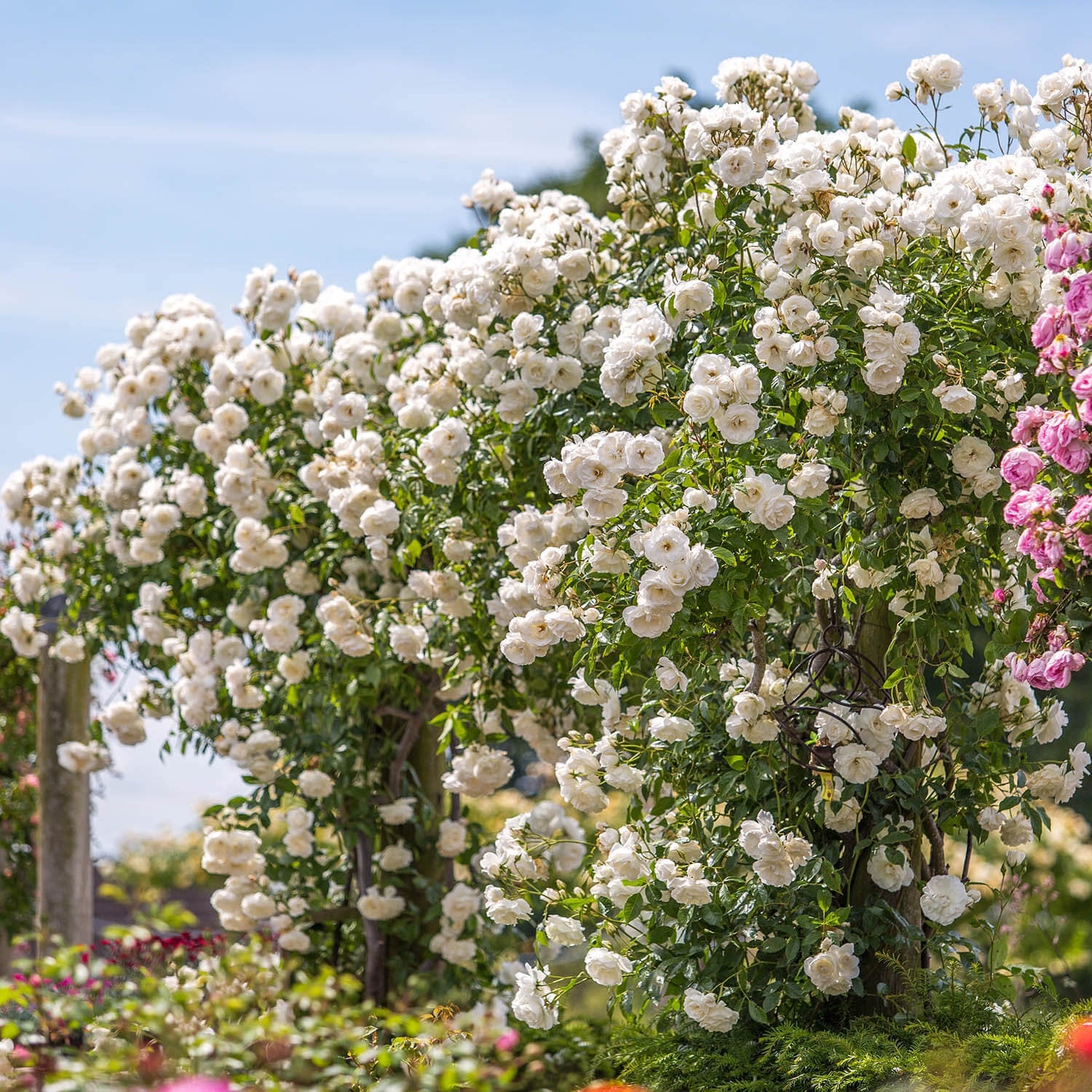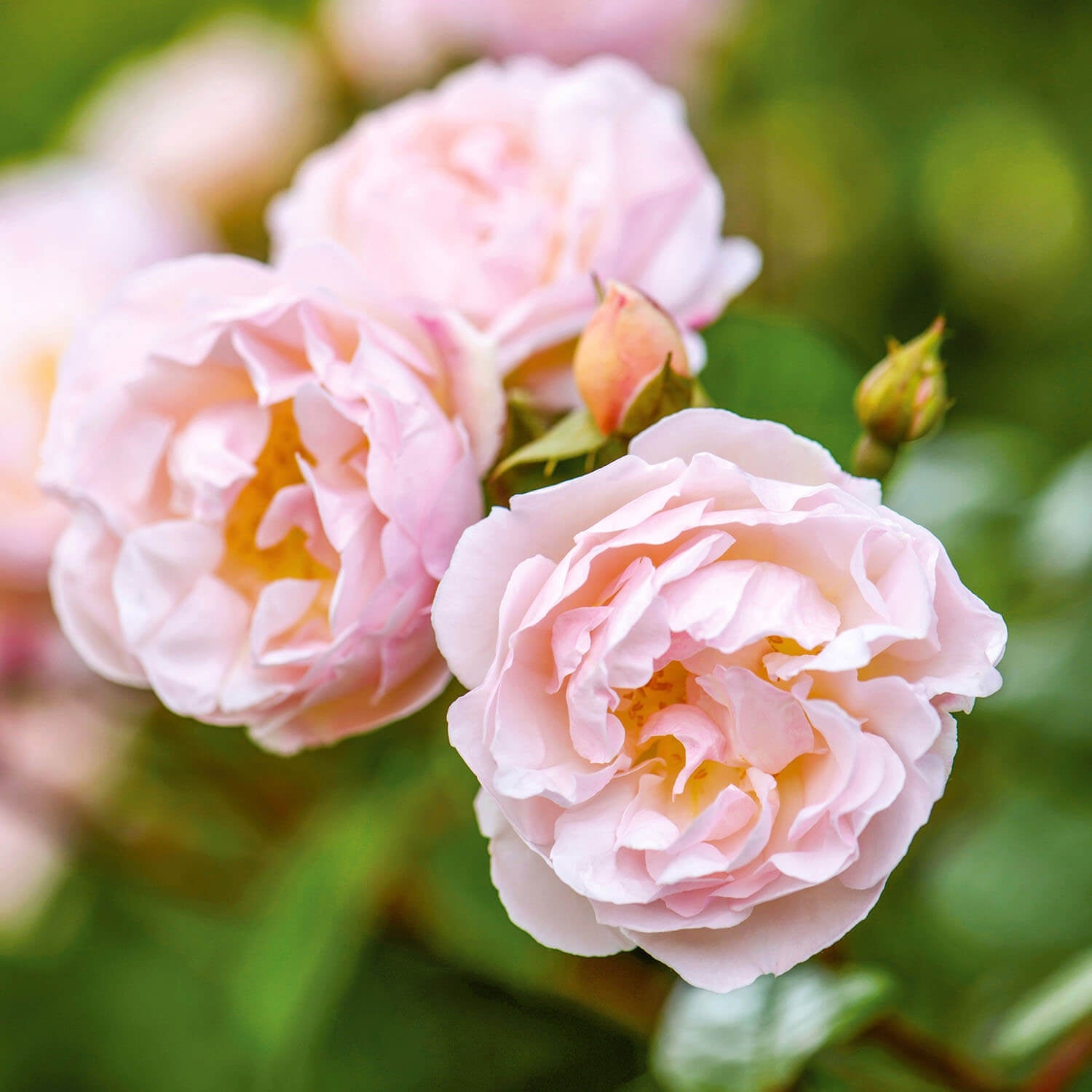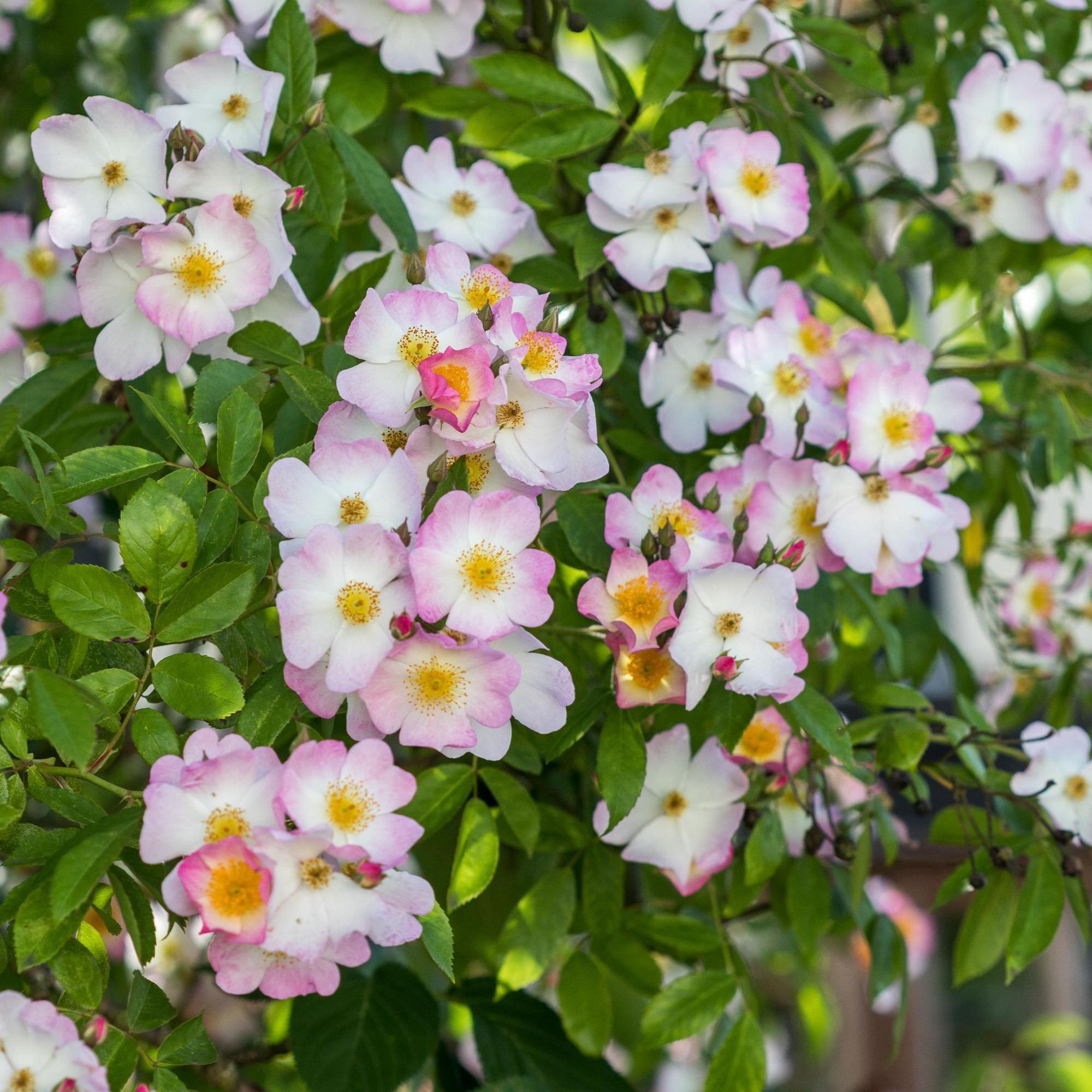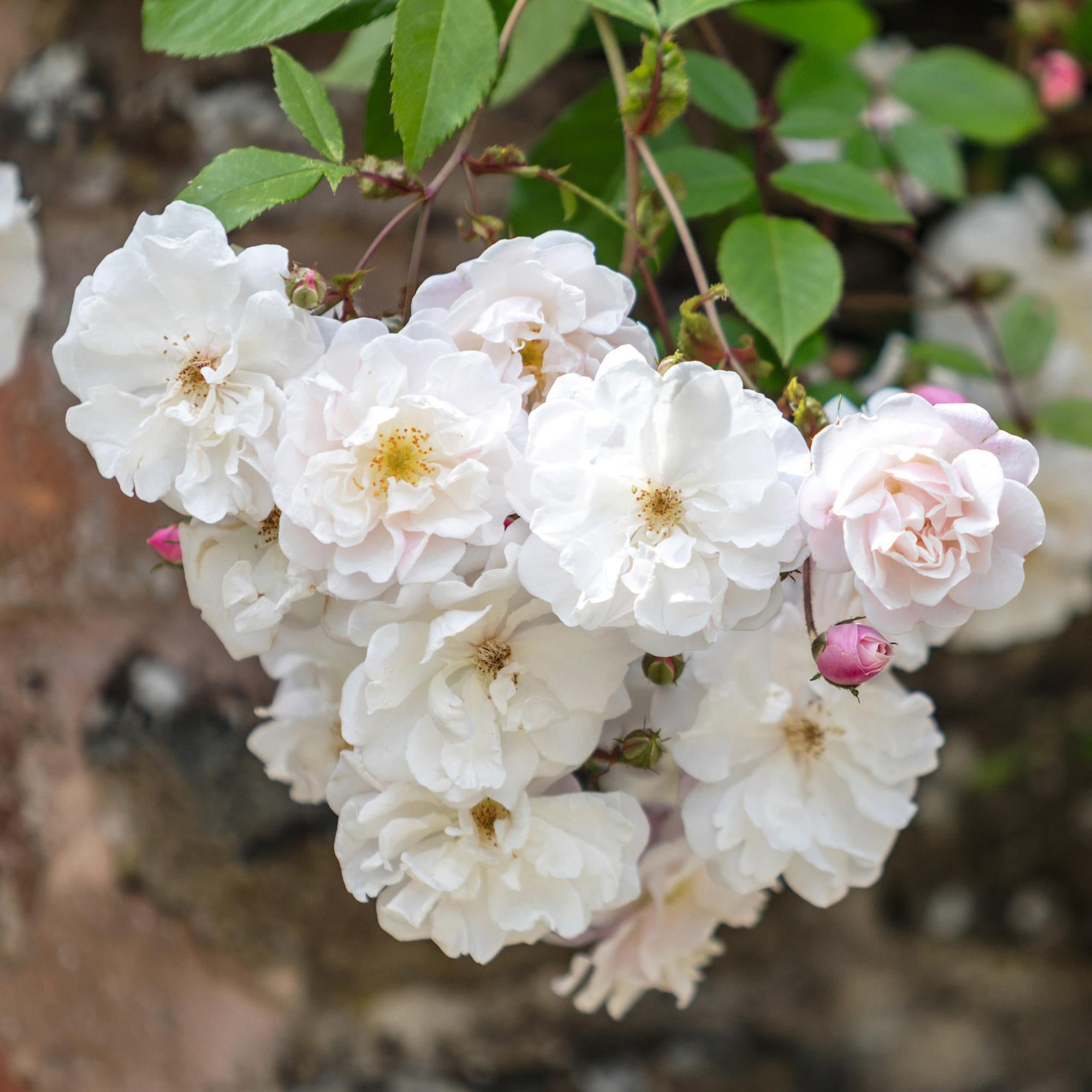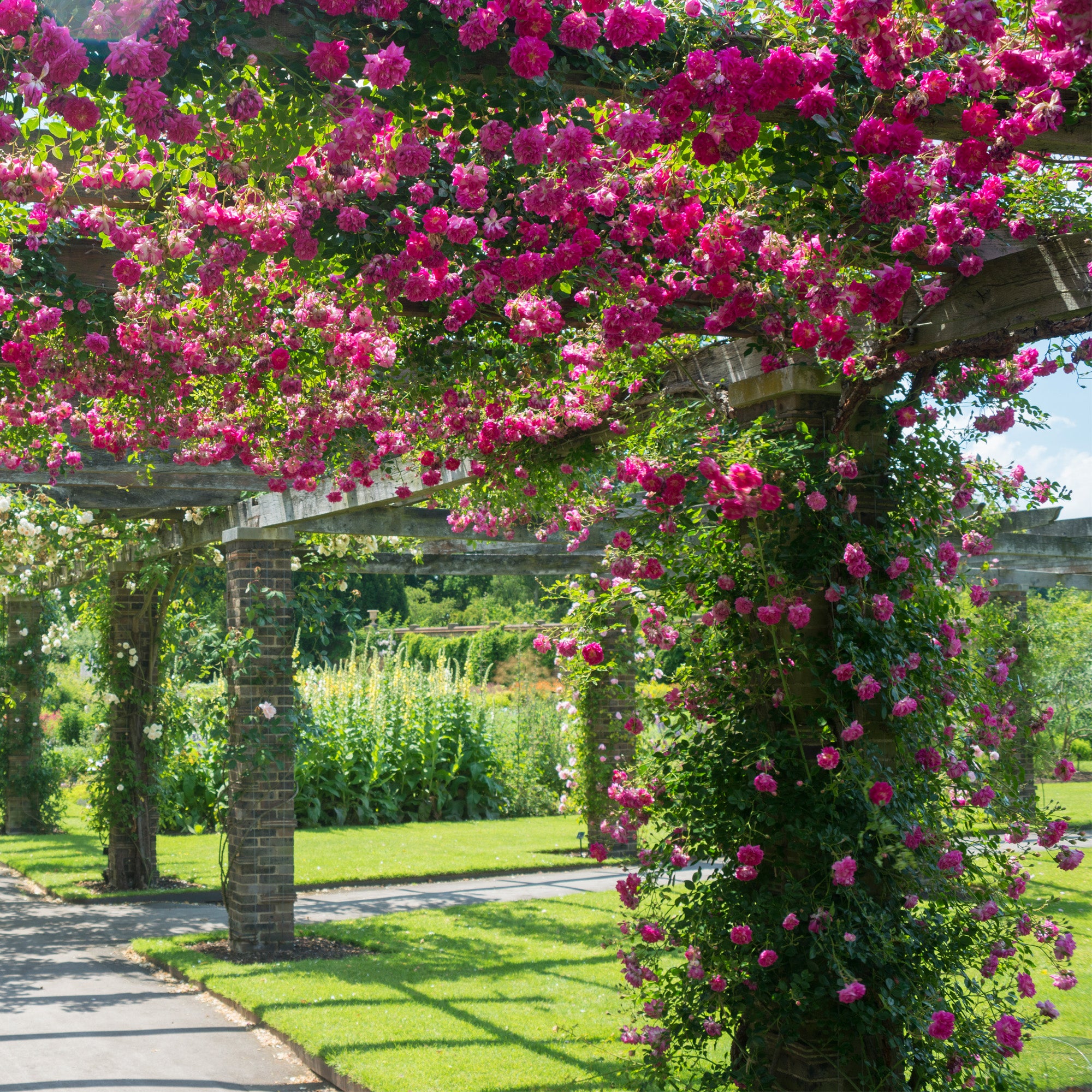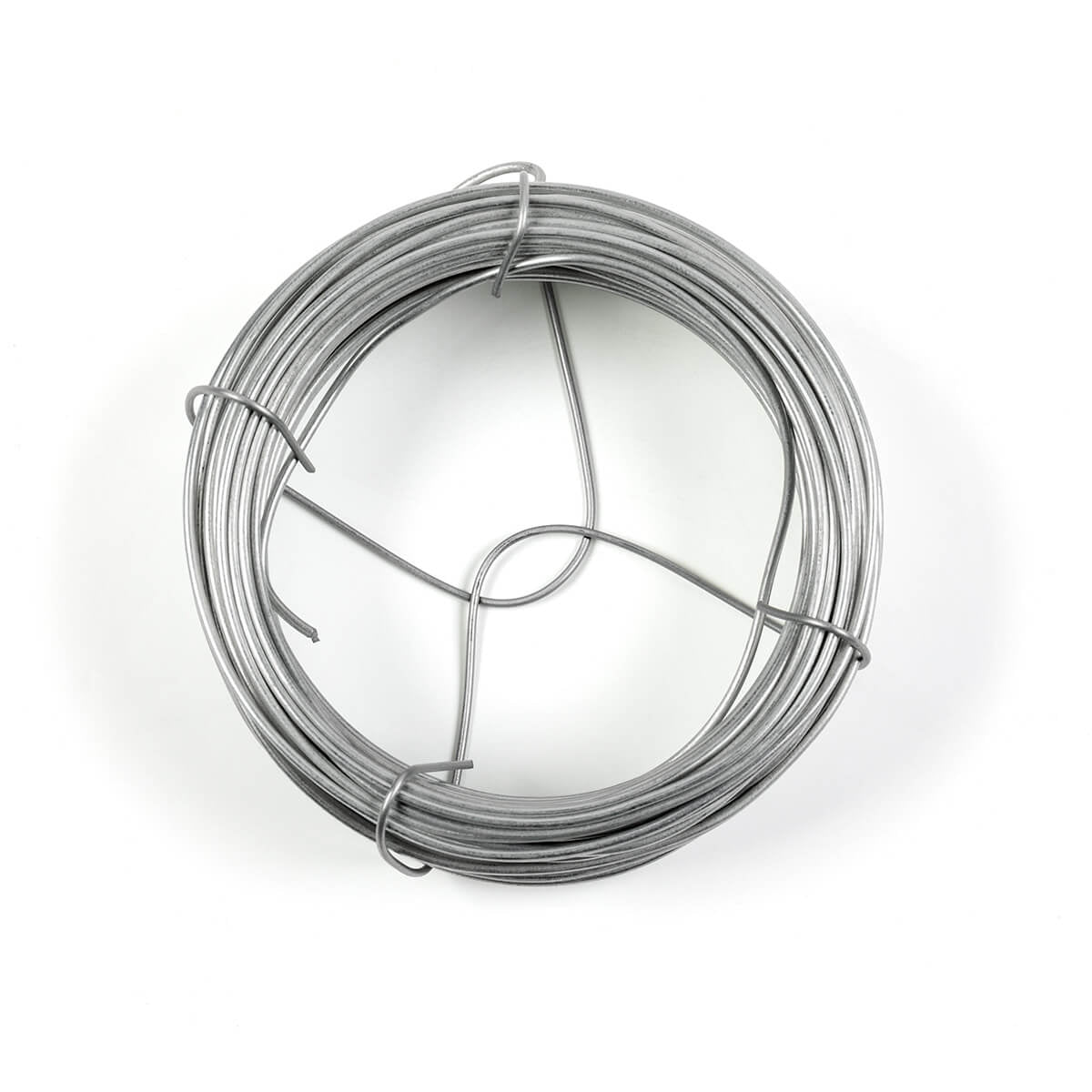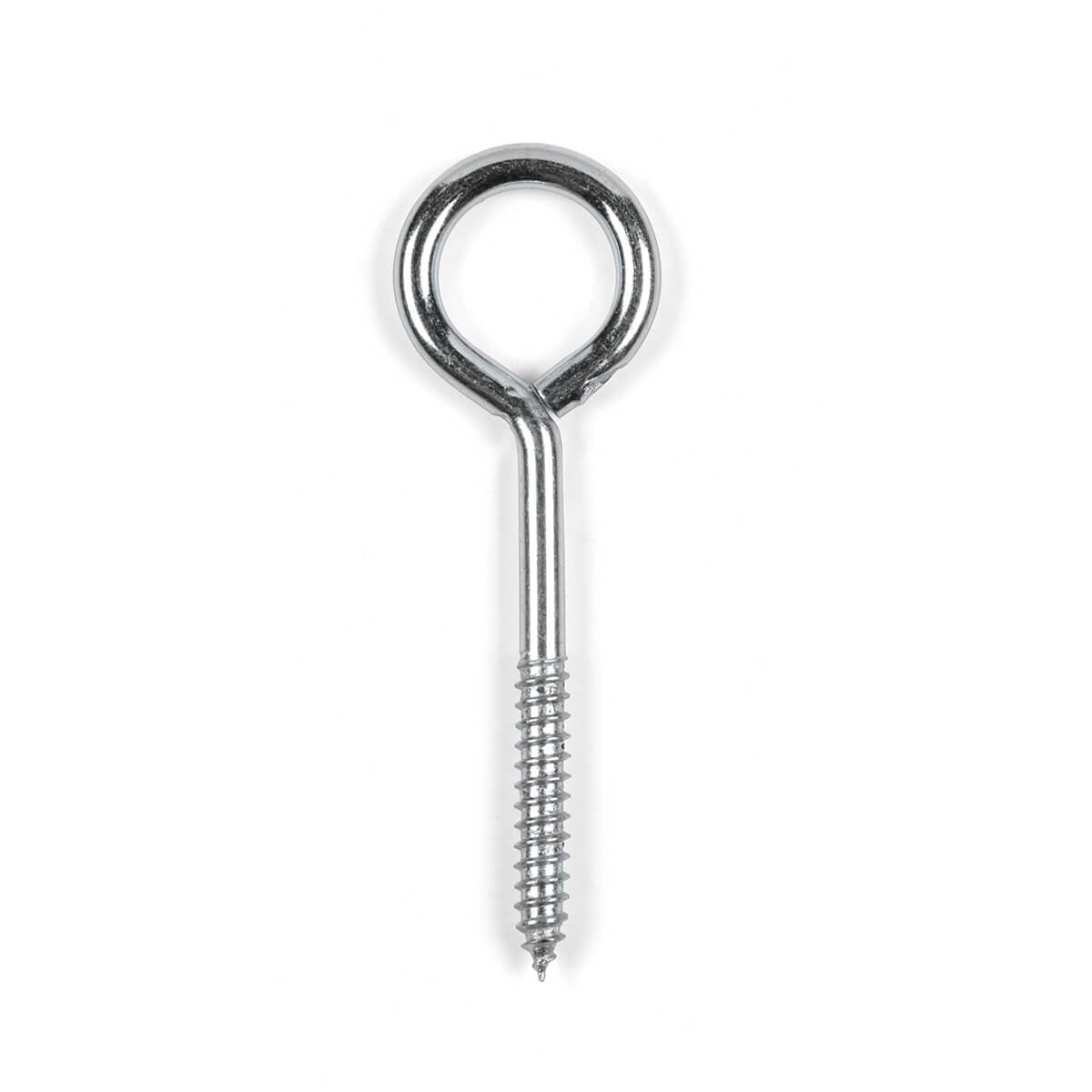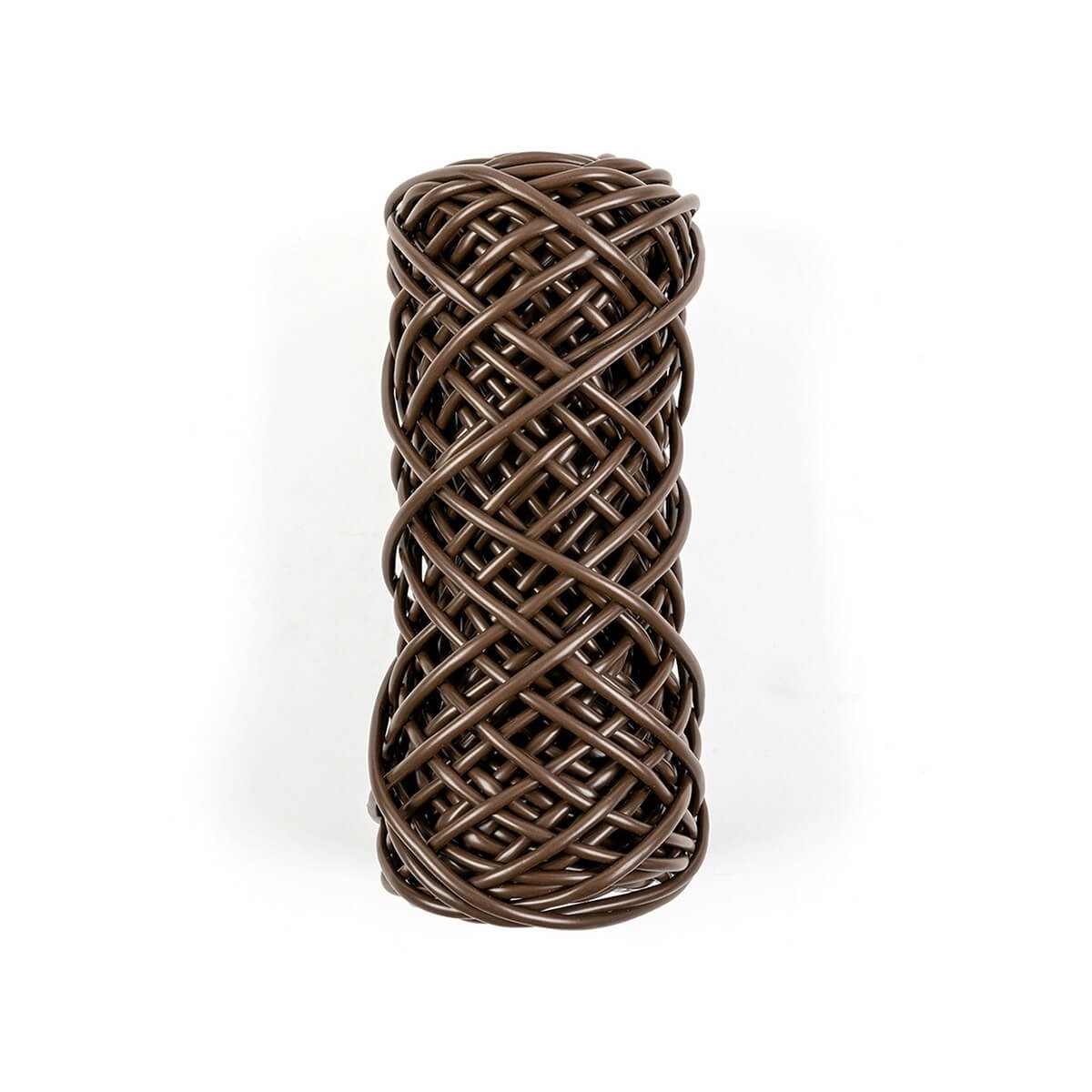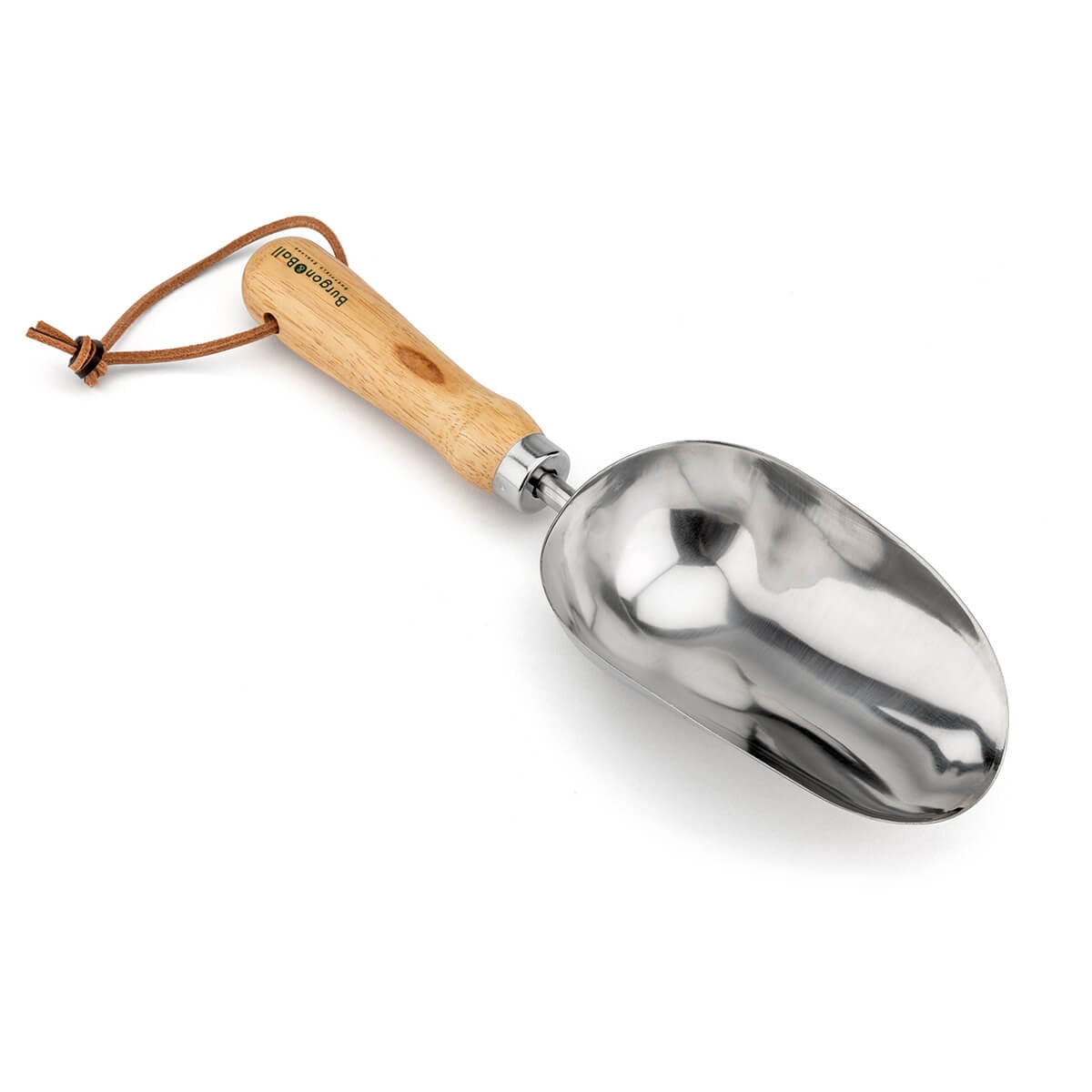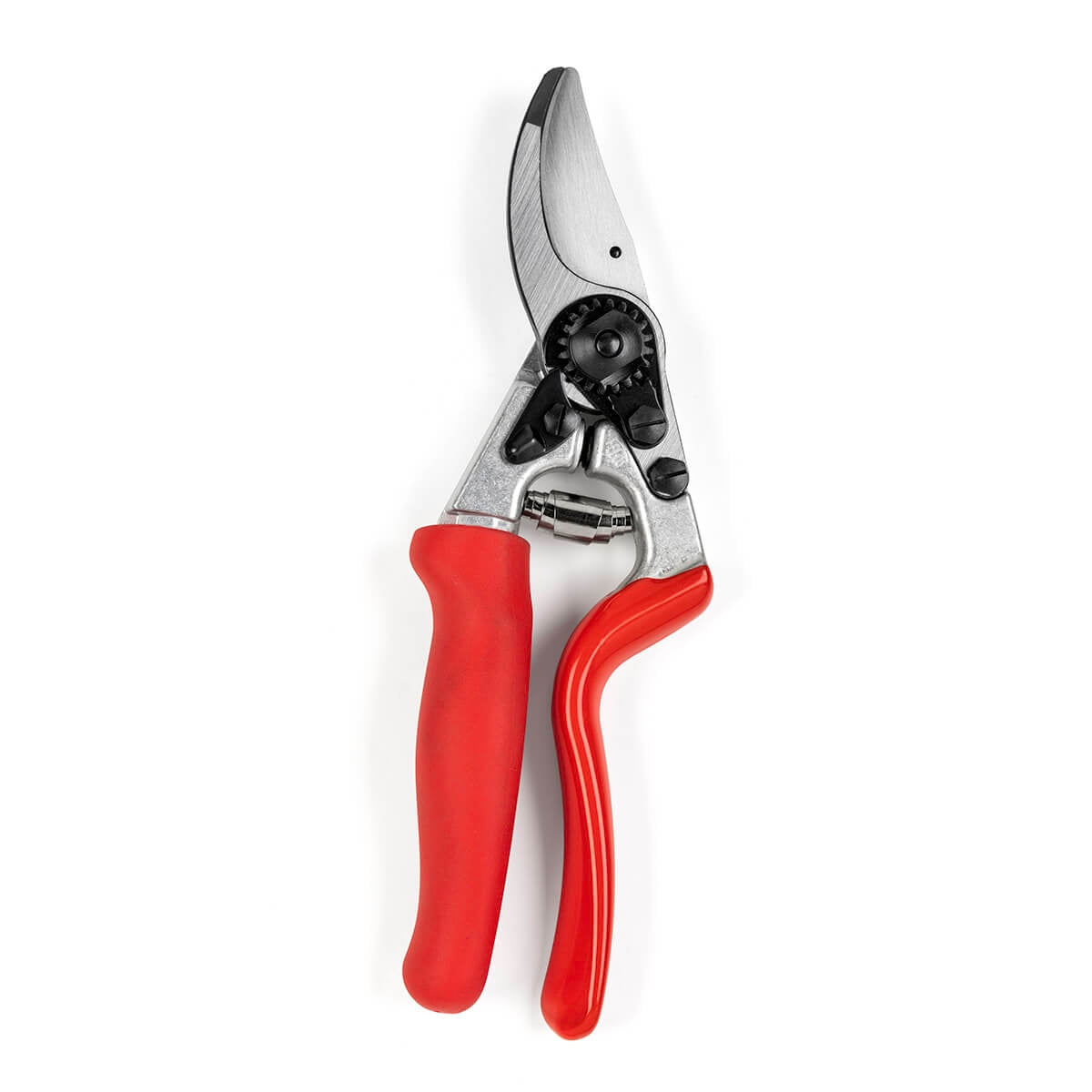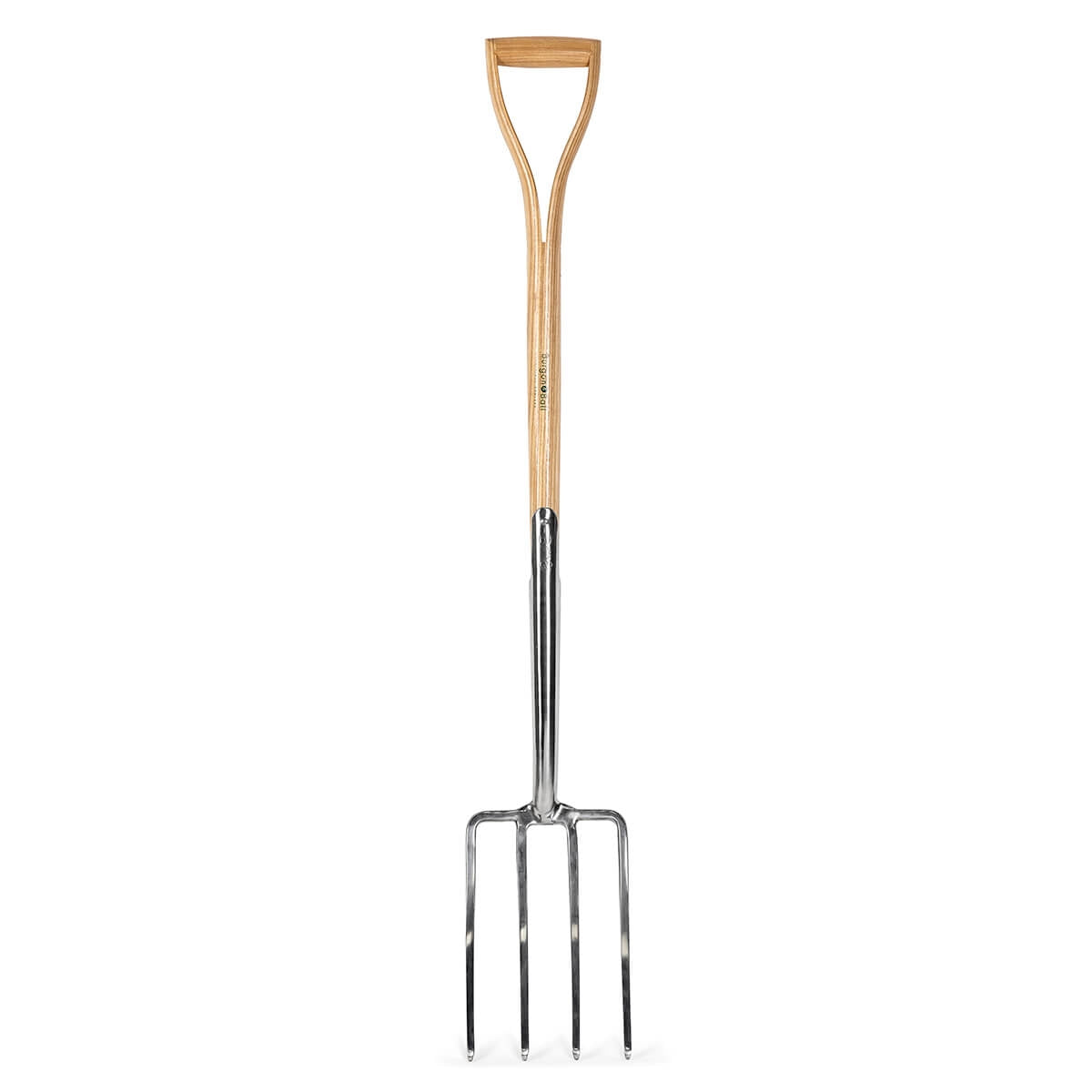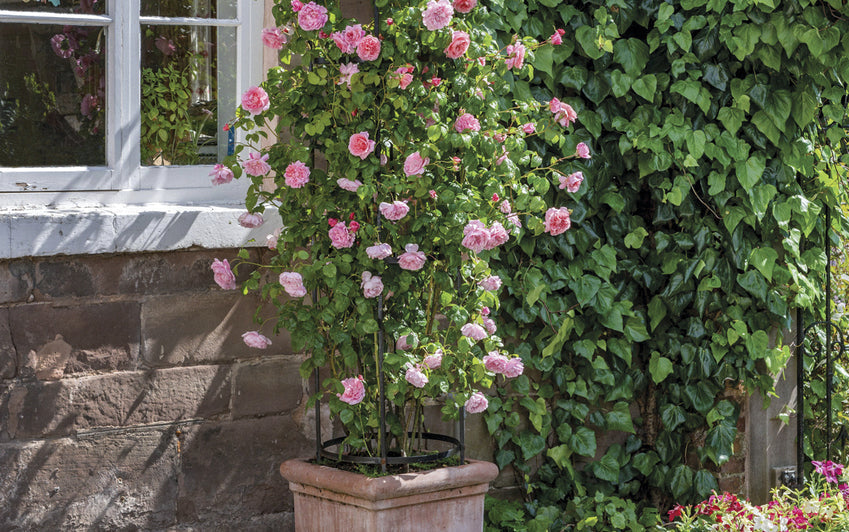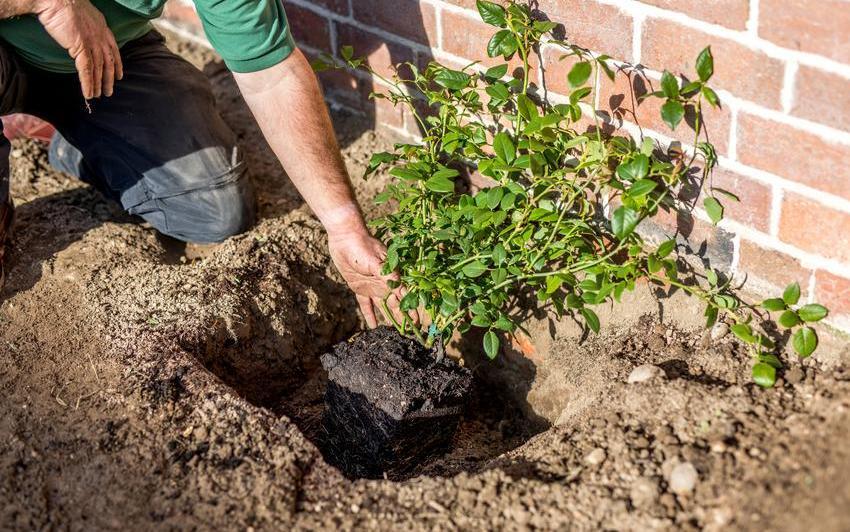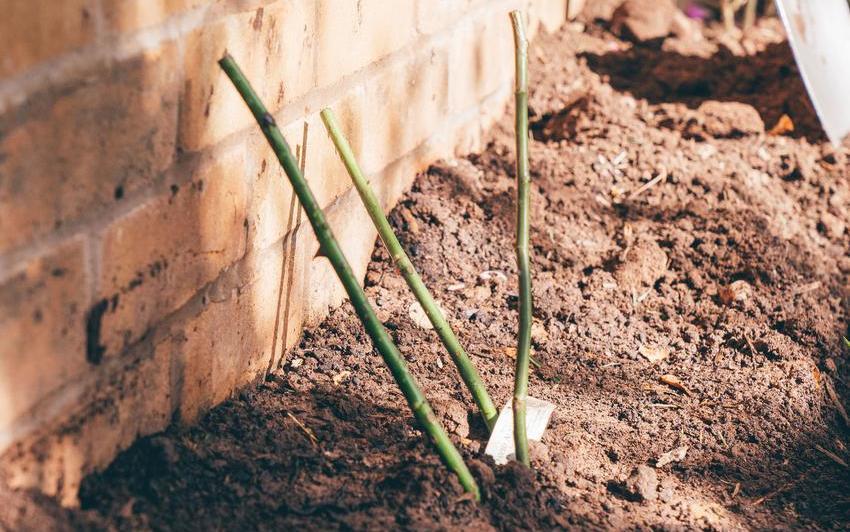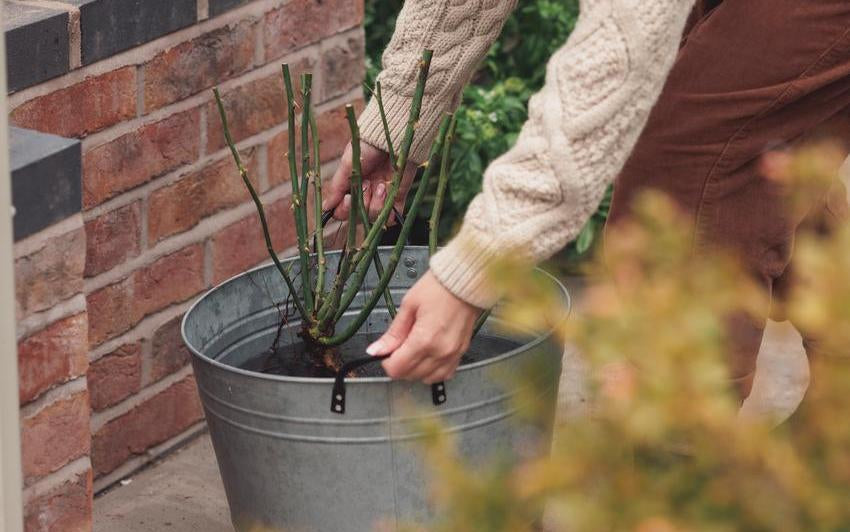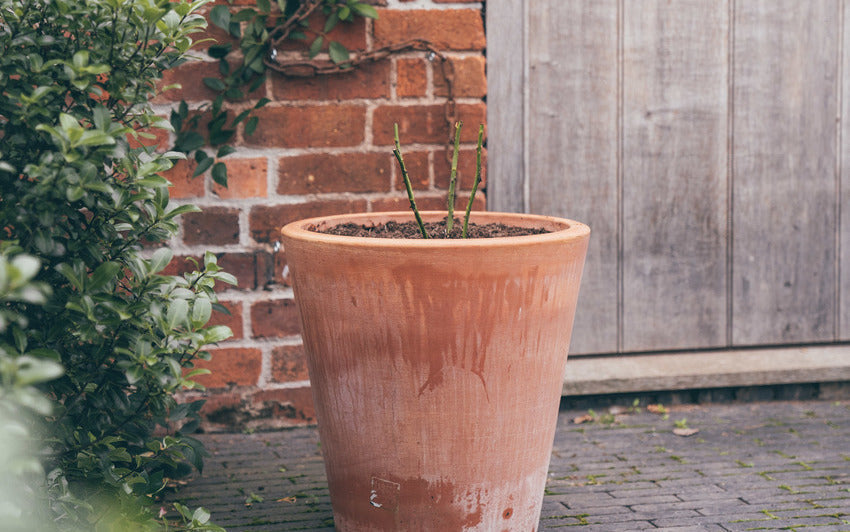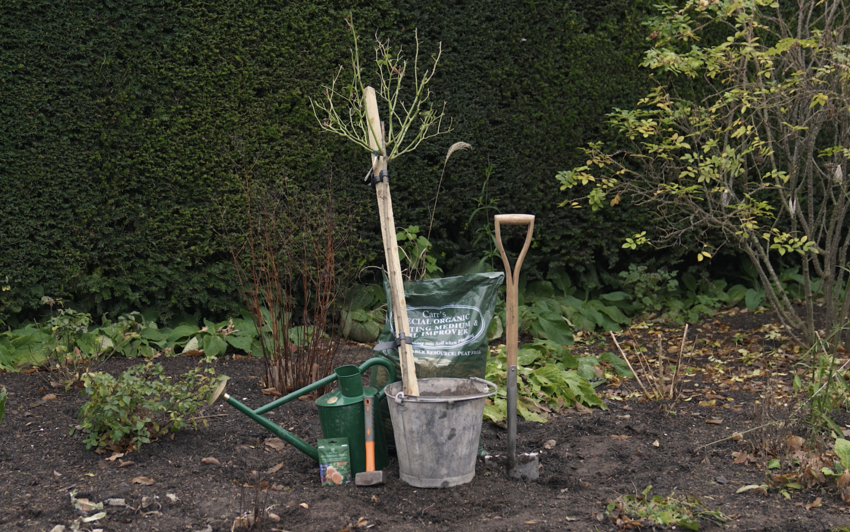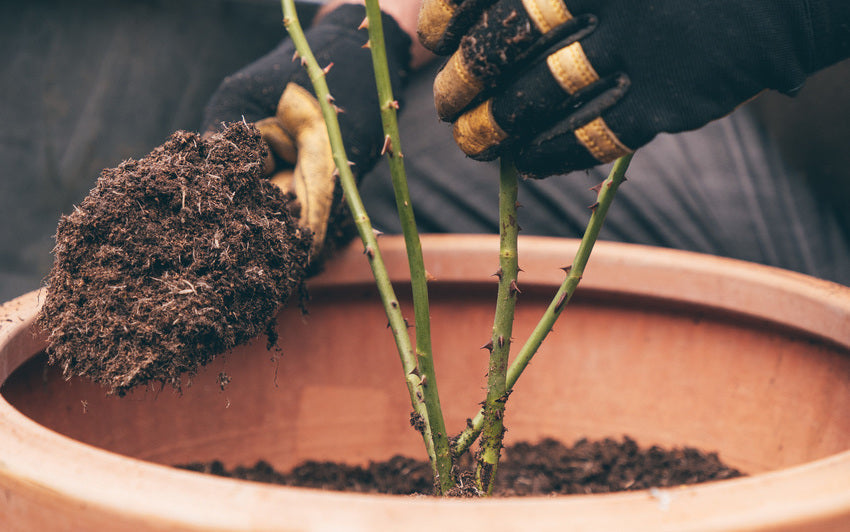Training a climbing or rambling rose allows you to direct the growth of your roses for even coverage. However you decide to grow and train your climber or rambler, it will need tying-in to secure it to the support structure. Training climbers or ramblers up structures, such as arches or fences, brings blooms up to eye level, creating a splendid floral feature.
Watch our rose expert show you how to train and tie a climbing rose.
By training a fabulous, fragrant climbing or rambling rose up a wall or fence, you can convert a dull, even unsightly area into one of the most stunning features in your garden. There are a number of ways of supporting your rose as it 'climbs' the wall or fence, we recommend setting up straining wires or using a trellis.
Whether you have a country cottage, Victorian villa or suburban semi, a rose scrambling up the house facade creates a welcoming entranceway, transforming your home. To make a strong statement, choose a rose that either complements or contrasts with the colour of your front door.
Support the rose with trellis or straining wires running horizontally at intervals of 12-18" (30-45cm). As the plant grows encourage side shoots by fanning out the stems into available spaces.
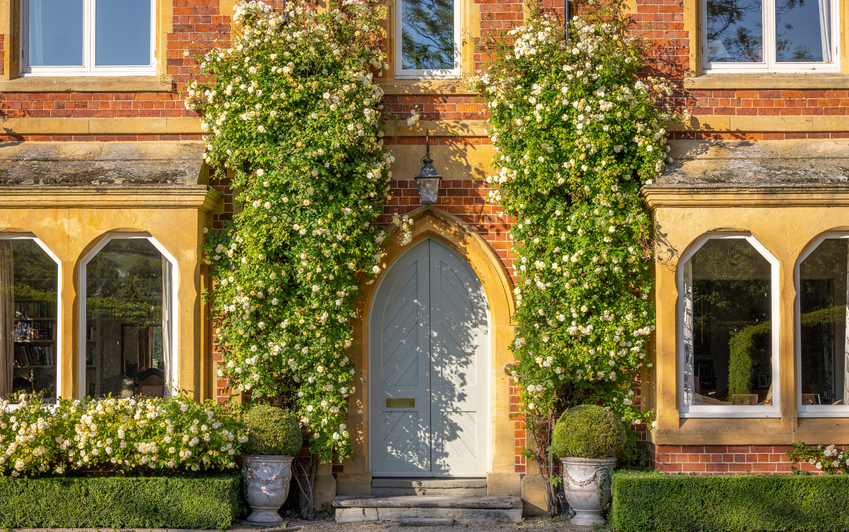
An obelisk or pillar adorned with roses adds a strong vertical dimension to a border. Create a beautiful focal point in the centre of a bed, or place two or more along a long border to inject a visual rhythm.
For pillars train the stems in a spiral around them to encourage the flowers from the ground upwards. Tie-in at 20cm (8") intervals, attaching the rose to the pillar.
For obelisks train a couple of the main stems straight up to the top of the structure. Then spiral the other stems around the structure, tying-in as you go - this encourages flowers from the ground upwards. Once the stems have reached the top regularly prune to keep them within bounds.
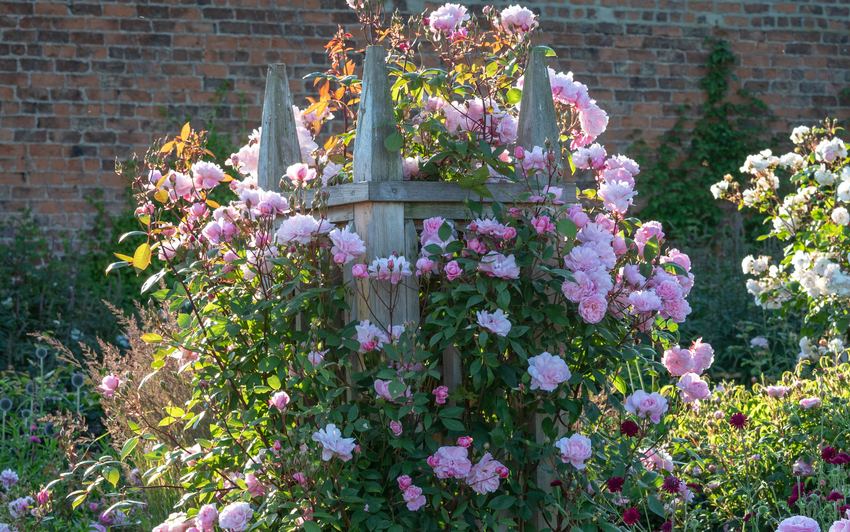
An arch is perfect for linking different areas of a garden and forming an entranceway with flowers overhead.
For an arch, train your roses on either side of your arch, upwards and over the top of it, tying-in to the arch as you go. You are aiming to create an even coverage with your two roses meeting in the centre point at the top of your arch.
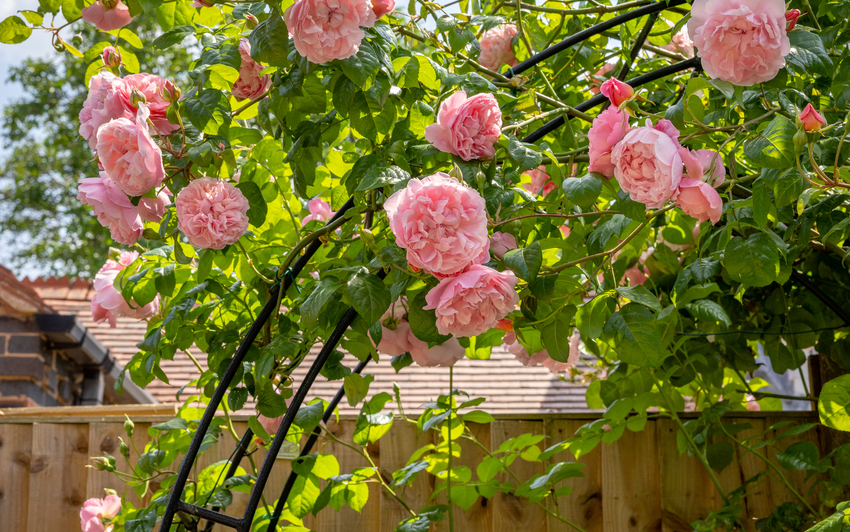
Pergolas are simply timber frames which can be used to create a walkway or provide a shady area to sit beneath.
For the uprights of your pergola, train your rose in a similar manner to training it up a pillar; training the stems in an upwards spiral. For the canopy above, first train a rose up one of the uprights, then, once the rose reaches the top of the structure. begin to tie-in shoots to the cross beams to create the 'roof'. You are aiming to cover the whole structure in blooms.
